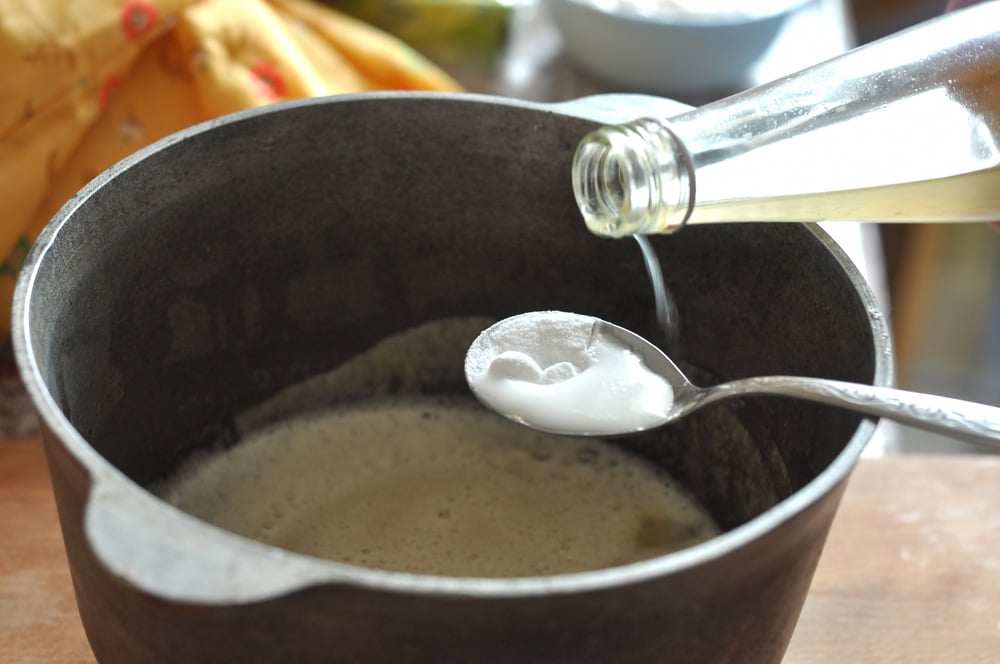
There’s no introduction necessary for just how important cleaning in the kitchen is. You want your cooking area to be as hygienic as possible, as it ensures your food is healthy and germ-free too.
Most of us use dish soap in our kitchens to make sure that our utensils, dishes, and other cooking tools stay as clean as possible no matter what. We also often use soap to scrub the work surfaces in the kitchen.
The only problem is that sometimes this soap gets onto the food if we neglect to rinse everything correctly. As a result, many users ask us how to remove the soap taste from their food. We’re here to discuss this topic in detail to help those encountering the issue.
How to Remove Soap Taste from Food?
We’re going to start by giving you the bad news first. If the soapy taste is strong in the food, there really isn’t anything you can do to remove it.
It’s best to throw the food away as consuming too much soap can cause diarrhea or even vomiting. Read on to find out how to prevent this problem in the future.
How to Avoid a Soapy Taste in Food
The first thing we recommend is ensuring that you rinse your dishes and cooking tools as well as possible after washing them with soap and hot water. Even a tiny bit of soap left on these can make the food you cook using them taste like soap.
While it’s sometimes tempting to just wash the dishes and leave them to dry, it’s important to always rinse them afterward to get rid of any soap residue. If you don’t have a double sink in your kitchen – one to wash and one to rinse – make use of a plastic basin for rinsing.
When washing, be sure to measure the dishwash soap carefully to avoid using too much. You often need as little as a teaspoonful or two in every sinkful of dishes. Using more will result in a soapy residue that’s difficult to rinse off and may get into your food.
Using a dishwasher can help with the problem as well as they have designated rinse cycles that will definitely remove all the soap before drying the dishes.
However, for those of you who have already made absolutely sure that your dish-cleaning and rinsing methods aren’t to blame, there is one other possibility.
This is the possibility that the tools, dishes, pans, and pots that you’re using to cook the food could be absorbing the scent of your dish soap.
This won’t happen with glass or ceramic cookware, but it can be the case with wooden spoons, plastic dishes, silicone utensils and bakeware, or clay dishes. Sometimes these tend to absorb the scent of the soap you use on them.
This leads to them transferring the scent over to the food that users prepare. Try to obtain a scent-free dishwashing soap and see if it makes a difference.
Alternatively, try these dishwashing soap alternatives. Do remember that all of these need to be rinsed off too.
- Baking soda. This is a mildly abrasive, food-safe powder that most people have in their kitchens. It will clean grease off dishes effectively and absorb odors. Simply mix the powder to a paste with a little water and apply it to the dishes with a cloth, sponge, or scrubber.
- Baking soda and vinegar. Use the same baking soda and water paste as above, except add a few drops of vinegar for extra cleaning power.
- Vinegar. Mix vinegar and water in equal parts in a small basin and use this to soak your dishes before rinsing. Do not use it for aluminum or cast iron cookware as the acidity of the vinegar will damage the metal.
- Salt. Mix a handful of salt in very hot water and use this to soak and wash your dishes. If you need an abrasive powder for stubborn dirt, apply salt directly to the dish with a wet sponge.
- Lemon. Lemons contain citric acid which cuts through grease. Lemons also leave a lovely fresh smell on your dishes. Simply rub the dishes with a lemon half and use hot water.
We hope these tips will help you to prevent a soapy taste in your food from now on. Remember, it’s not possible to remove soap from your food and it’s best to throw it away because it may make you ill. You can prevent the problem from happening in the future though.


